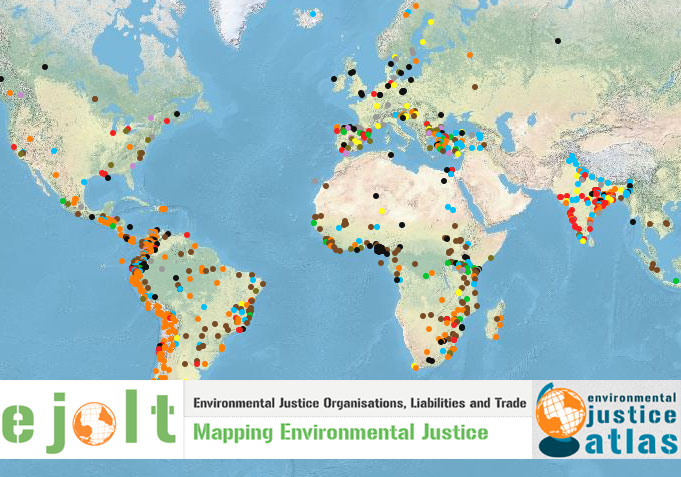
A list of the 40 most influential environmental justice conflicts in American history—compiled by students at the University of Michigan—has been added to a new “Global Atlas of Environmental Justice,” an interactive online map detailing about 1,000 environmental conflicts worldwide.
The atlas is a product of the European Union-funded EJOLT project (Environmental Justice Organizations, Liabilities and Trade), which is hosting a conference this month in Lund, Sweden.
Professor Paul Mohai of the U-M School of Natural Resources and Environment and four students from his graduate-level Environmental Justice 593 course will present their findings, including the U.S. list, at the conference.
EJOLT has previously reported on and analyzed environmental conflicts in more than 60 countries, including India, Ecuador, Turkey, Mexico and South America. But until now, U.S. case studies have not been included in EJOLT’s efforts.
U-M students are helping to change that.
To compile their “Top 40” list for the global atlas, the U-M students—with the help of faculty advisers Mohai and Professor Rebecca Hardin of SNRE—surveyed more than 200 environmental justice leaders, including activists and scholars.
Their list of top U.S. environmental justice conflicts includes the Warren County PCB disposal site in North Carolina, Detroit’s waste incinerator, Love Canal in Niagara Falls, N.Y., mountaintop mining removal in Appalachia, oil drilling in the Arctic National Wildlife Refuge, uranium mining on Navajo land in the Southwest, and the disproportionate impacts of hurricanes Katrina and Sandy on the residents of New Orleans and New York City, respectively.
“We consider ourselves lucky to be at the University of Michigan, where a 1990 environmental justice conference catalyzed a coalition for linked scholarship and action and which continues to play a major role in the evolution of the United States environmental justice movement,” said Alejandro Colsa-Perez, a Fulbright master’s student from Spain studying at SNRE.
“The EJOLT project allowed us to explore a wide array of past and present conflicts, giving us a richer understanding of how environmental justice emerged as both a social movement and an interdisciplinary research field in the United States,” said SNRE student Bernadette Grafton, who is traveling with Colsa-Perez to Sweden with fellow team members Katy Hintzen and Sara Orvis.
Environmental justice is defined by the U.S. Environmental Protection Agency as the fair treatment and meaningful involvement of people of all races, cultures, incomes and education levels in the development and enforcement of environmental laws, regulations and policies. Fair treatment means that no group of people should bear a disproportionate share of the negative environmental consequences resulting from industrial, governmental and commercial operations or policies.
U-M has a longstanding commitment to the academic study of environmental justice and is home to the first environmental justice curriculum at any major U.S. university. Mohai is a pioneer in the field and was among the earliest researchers to assemble evidence that minority neighborhoods are disproportionately exposed to environmental hazards.
“These U-M students will be the first EJOLT collaborators from the United States to attend one of these workshops,” Mohai said. “This will be a unique opportunity for them to act as ambassadors communicating best practices and policies from the United States environmental justice movement to an international audience.
“They will also be able to network with environmental justice leaders from diverse backgrounds and establish new connections for future collaboration.”
SNRE’s Hardin works in Africa, studying the social and health consequences of concessions for mining, logging, ranching and wildlife management.
“We want our students to know transnational contexts,” she said. “We want them to be leaders at addressing injustice and environmental damage, from Detroit to Dakar.”
The EJOLT mapping project brings together 23 universities and environmental justice organizations in 18 countries on four continents. The project is coordinated by Professor Joan Martinez-Alier and his team of ecological economists at the Autonomous University of Barcelona in Spain.
The maps increase the visibility of environmental conflicts, making it easier for people to find information and to connect with others working on related issues.
“The atlas illustrates how ecological conflicts are increasing around the world, driven by material demands fed primarily by the rich and middle-class subsections of the global population,” Martinez-Alier said.
About the image: Environmental Justice Organisations, Liabilities and Trade: Mapping Environmental Justice. Environmental Justice Atlas. Composite images courtesy: EJOLT



